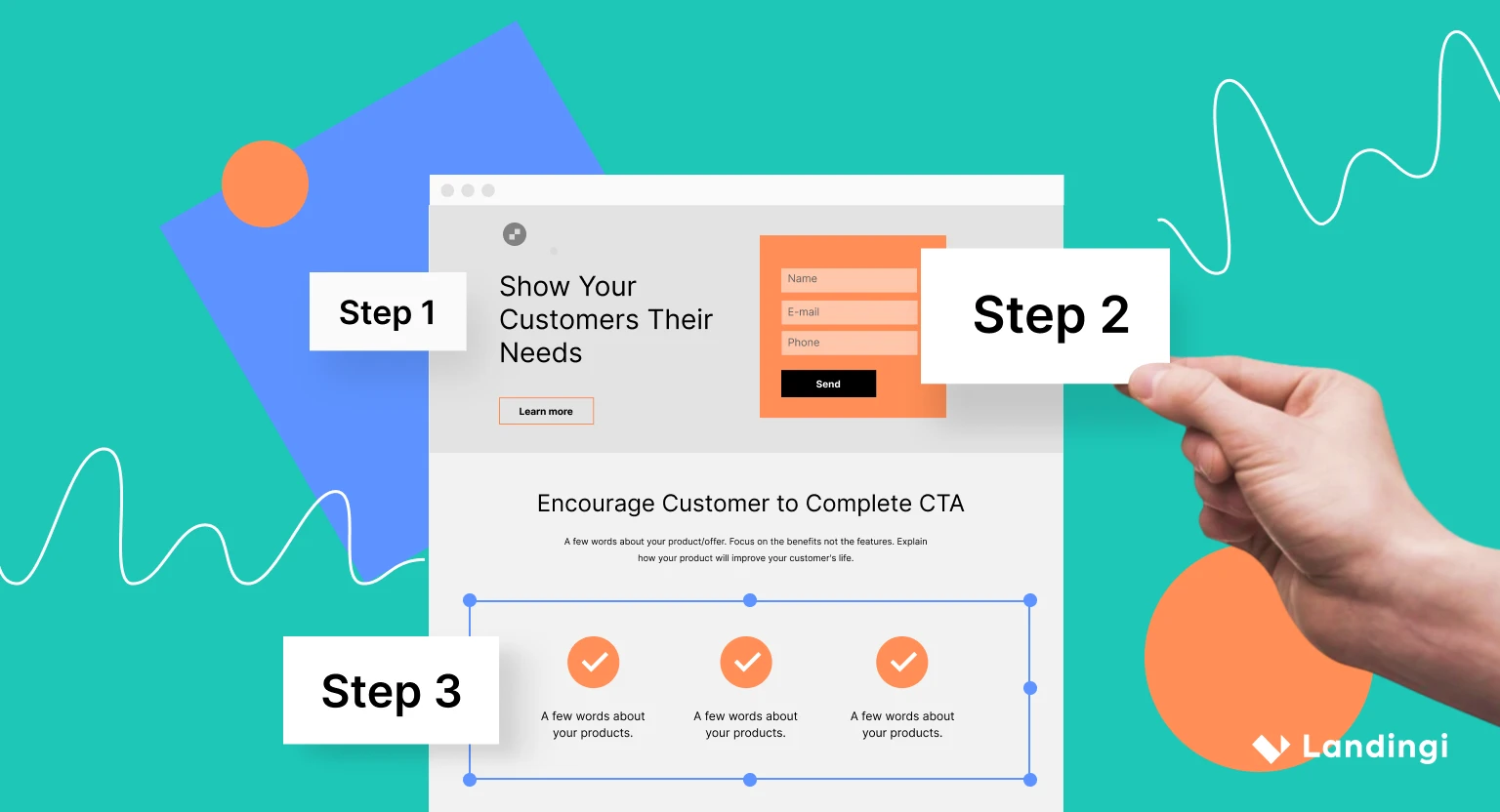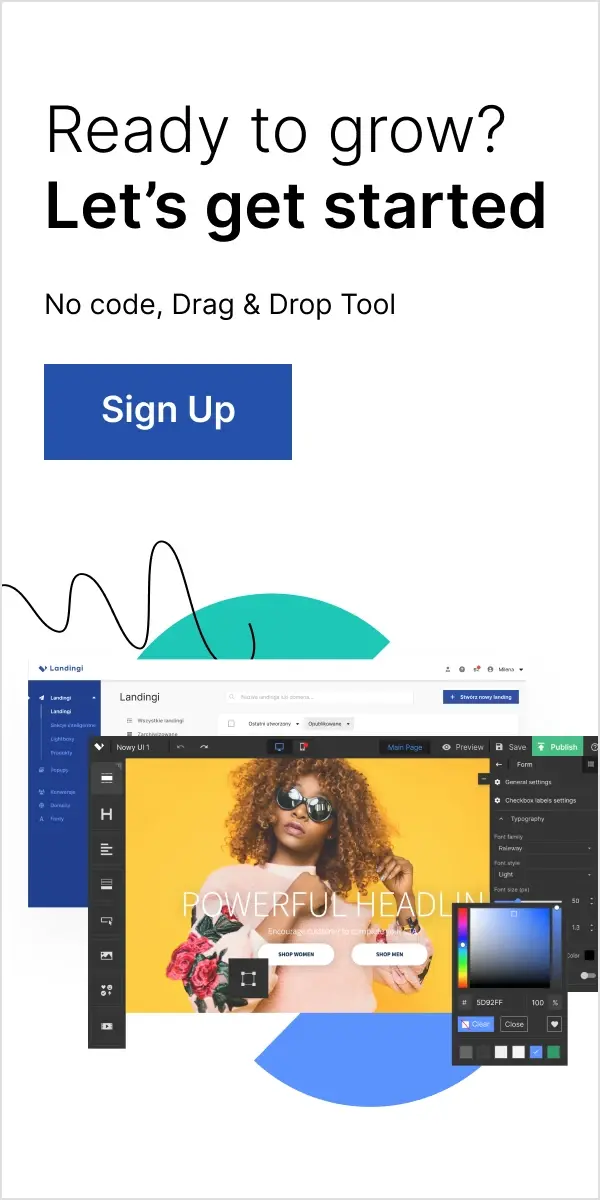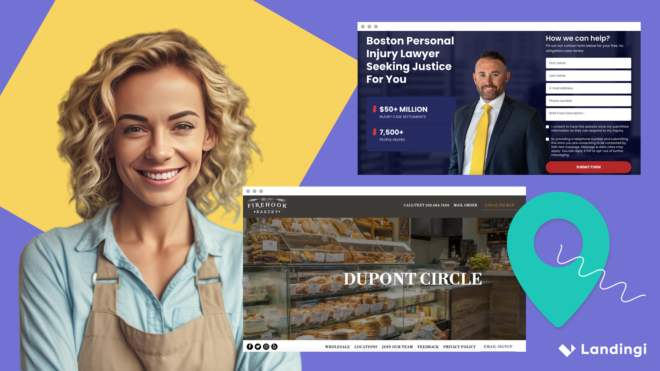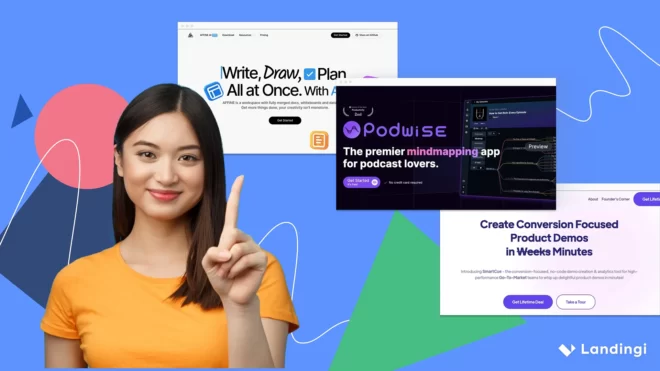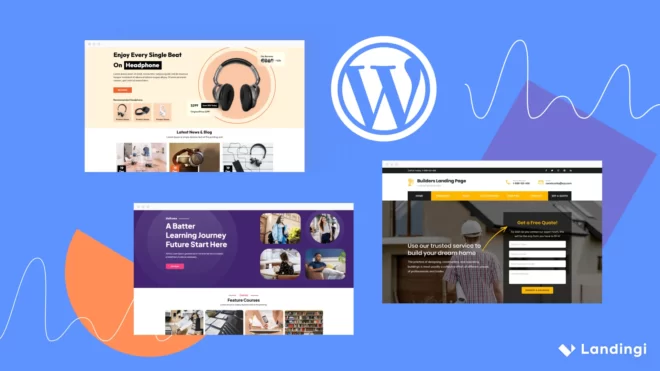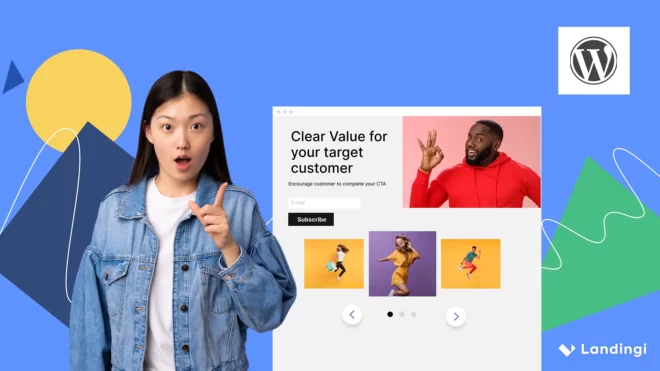Landing page components are specific elements or parts of a page that serve a particular purpose such as communicating information, engaging visitors and encouraging them to take a desired action (like CTA, headings etc).
A landing page is a specific type of web page created for promotional or advertising purposes, as defined by Sameer Meesala in the Journal of Emerging Technologies and Innovative Research.
Also known as a lead-capture page or destination page, it is distinct from other pages on a website and is tailored to a particular marketing campaign, aiming to convert visitors into leads or customers.
Since landing pages are a crucial tool in marketing, it’s worth paying more attention to its anatomy.
Elements considered most important include the headline, visuals, call to action, trust signals, content, design and layout, contact information, form and footer. These building blocks work together to create a consistent and compelling user experience. They play a powerful role in influencing visitor behavior and, ultimately, translating into conversions. For example, a landing page without an effective CTA or with a complicated and daunting form may result in high bounce rates and lost opportunities.
Make your sections smartable and let go of mundane manual tasks with Smart Sections! An easy way to manage bulk changes.
What is Landing Page Format?
The format of a landing page refers to its structure, design and content arrangement.
Every successful marketing campaign requires landing pages that are tailored to meet the objective of the campaign and contribute to achieving it effectively.
The appropriate format should ensure a cohesive and user-friendly experience. Choosing which format is right for your landing page depends on your target audience and the goal of the landing page. However, there are certain elements that are crucial for every landing page.
Why is a Landing Page So Important?
Landing pages play a crucial role in converting visitors into leads or customers. Landing pages that are tailored specifically to the audience and purpose of a particular campaign increase the chances of capturing the attention of your target audience.
This is why it is so important for them to focus on a single objective, eliminate distractions and direct the visitors towards a desired action, be it signing up for a newsletter, making a purchase, or downloading an e-book.
A well-optimized landing page is crucial for your business, as it can considerably boost conversion rates.
What are the Key Components of a Landing Page?
An effective landing page should feature following 9 basic elements:
(1) A convincing headline that clearly communicates the main benefit or message of the page.
(2) Visuals, meaning engaging elements, such as a high-quality images or video, that capture attention and are consistent with the page’s purpose.
(3) Call to action, i.e. a clear and persuasive instruction prompting visitors to take a specific action.
(4) Trust signals, such as customer testimonials, reviews, security badges, or certifications.
(5) Content, which is information that should always be useful and focused on the visitors.
(6) Design and layout, which are crucial aspects that influence how visitors interact with the page.
(7) Contact information, which goal is to establish trust, offer support, encourage communication, and provide a means for visitors to take the next steps.
(8) Form, where visitors can provide their information to enable contact or transactions.
(9) Footer, which may include additional links, contact details, and any necessary disclaimers or privacy policy information.
Which Item is an Essential Part of an Optimal Landing Page Structure?
The most crucial part of a Landing page layout is Call to Action (CTA). By guiding visitors from interest to action, the CTA is the linchpin of a landing page. A well-executed CTA can have a significant impact on the success of a campaign by effectively converting visitors into leads or customers. However, for a CTA to be effective, it must be powered by relevant content, credible testimonials and an intuitive design.
1. Headline
The headline is the first thing visitors see when they arrive at your landing page. It should grab their attention to make them stay and convey the main value proposition.
A strong headline on a landing page is of paramount importance for several reasons. It creates the first impression and sets the tone for the entire user experience. It gives visitors a quick understanding of what the site is about and what benefits they can expect. From a marketing perspective, a well-optimized headline contributes to the search engine optimization (SEO) of the page. By including relevant keywords in the headline, you can improve the page’s visibility in search engine results, drawing more organic traffic.
Below you will find some tips on writing a strong headline.
- A compelling headline should be concise, clear and appealing to the target audience. Understand your target audience and tailor the headline to resonate with their needs, desires, or expectations. Speak their language. For instance, “Boost Your Sales Today!” might be more effective than a simple “Welcome to Our Site.”
- A headline should be aligned with the content of the landing page and the overall goals of your campaign. This ensures a smooth transition for visitors.
- Use powerful verbs and action-oriented language that encourages the visitor to take a specific action, such as ‘discover’, ‘transform’ or ‘unlock’.
- Be unique and differentiate yourself from the competition. If you have unique features or benefits, highlight them. A headline should feature the benefits of your product, service, or offer.
- Appeal to your viewers’ emotions. Whether it’s excitement, curiosity or a desire for improvement, relating on an emotional level can be potent.
- In order to consider SEO, include relevant keywords in your headline to improve search engine visibility.
- Use numbers or statistics to add credibility and make your headline more tangible.
- Make sure your headline is concise and that it works well on smaller screens. Mobile users often skim content, so make the headline easy to scan.
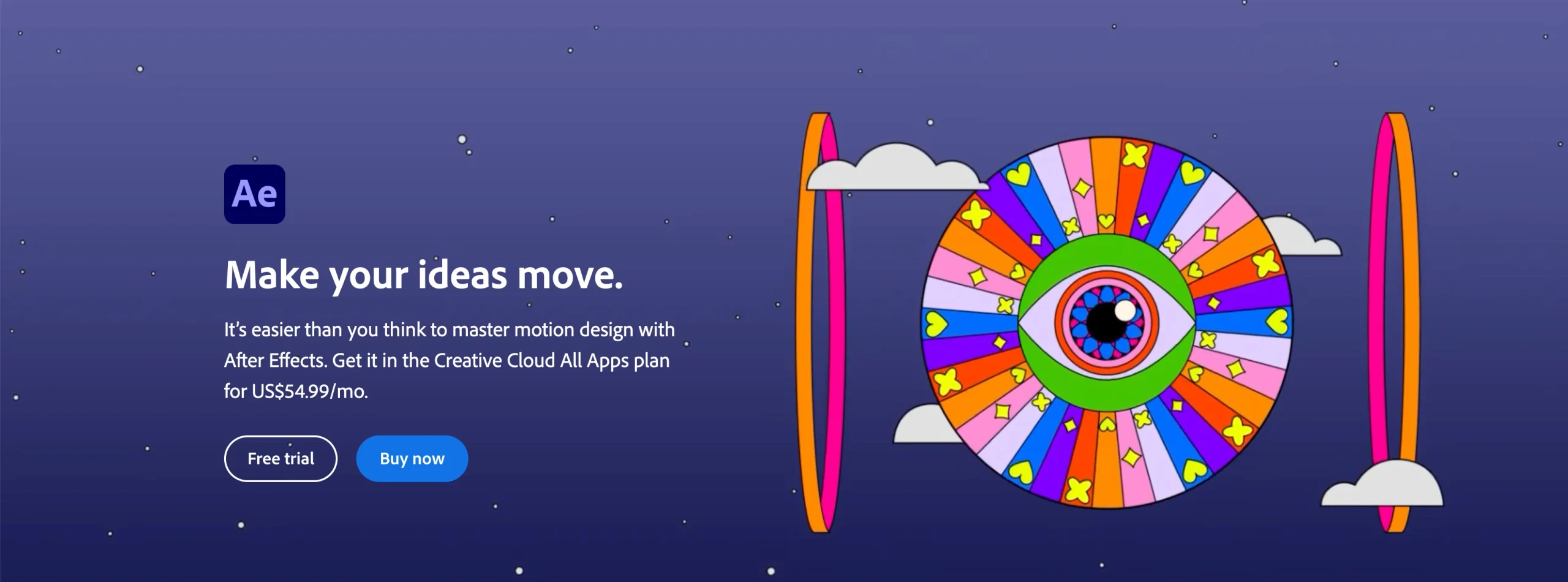
2. Visuals
Visuals on a landing page refer to the graphical elements (like hero images, pictures, videos, animations, etc.) used to enhance the visual attractiveness and overall user experience. These visuals play a crucial role in capturing attention, conveying information and influencing the emotional state of visitors.
The most effective type of visual for engagement on a landing page can vary depending on the type of product or service, the target audience and the overall goals of the page. However, certain types of visuals tend to be more universally engaging. They include images, videos, infographics, charts or graphs, product demonstrations and branding elements.
Remember that visuals should be relevant to the content of the landing page and resonate with the target audience. For instance, a B2B software company might use screenshots or demo videos, while a fashion brand would showcase high-quality product images.
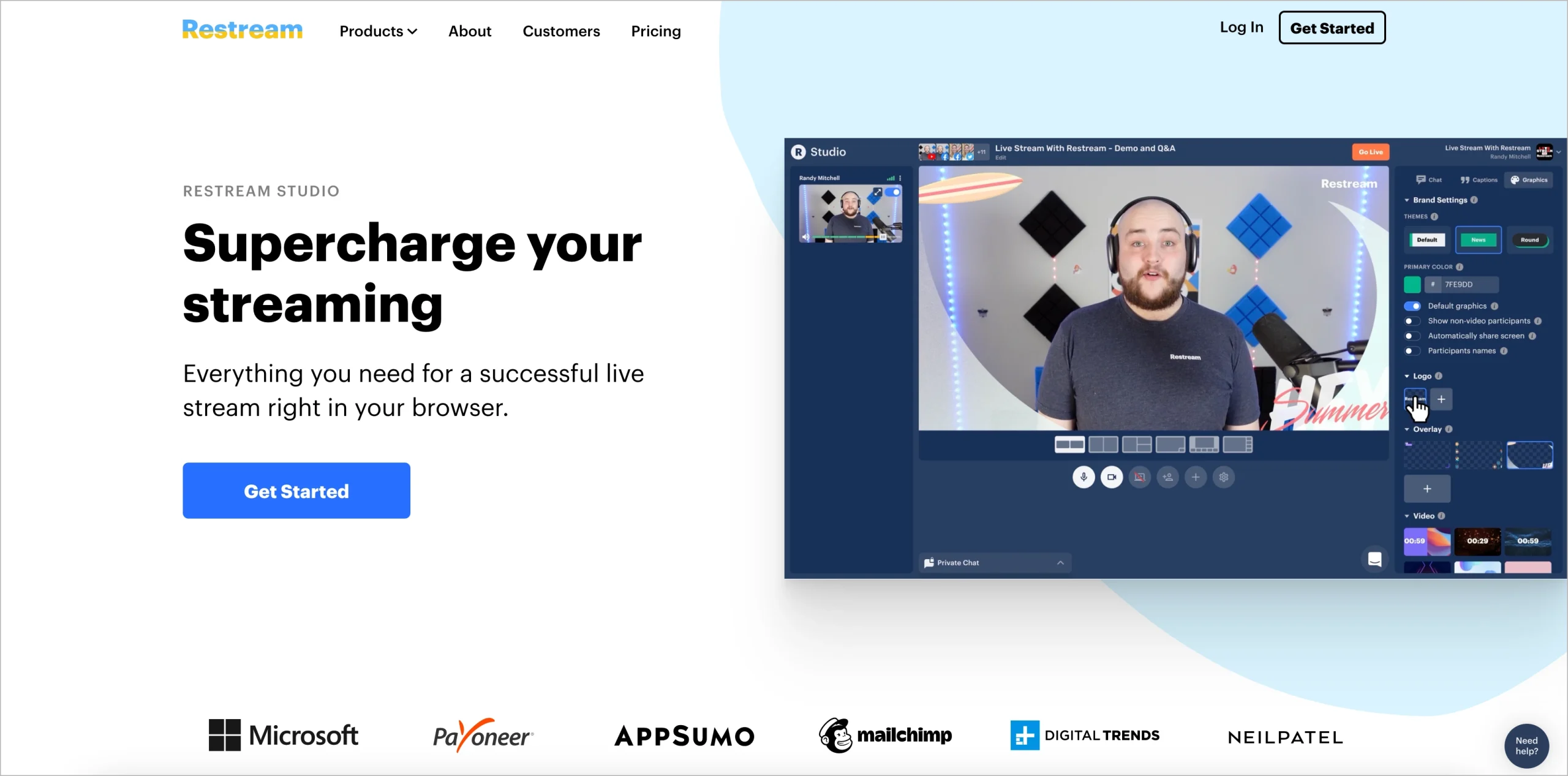
When using visuals on a landing page, it’s important to keep a balance between aesthetics and functionality. Ensure that visuals support the overall message and objectives of the page, enhance the user experience, and load efficiently for optimal performance. A/B tests and optimization can help you determine the most effective visual elements for your specific audience and goals.
3. Call to Action (CTA)
A CTA is a prompt or instruction designed to elicit an immediate response or action from the visitor. It is the heart of the landing page. The CTA is typically presented as a button, link or other clickable element that stands out on a landing page. It’s strategically placed to grab the user’s attention and prompt them to take the specific action that is in line with the objectives of a landing page. Effective CTAs play a crucial role in guiding the user journey and optimizing conversion rates on landing pages.
Common examples of CTAs include the following types:
- “Sign Up Now”
- “Buy Now”
- “Subscribe Today”
- “Get Started”
- “Learn More”
- “Get a quote”
- “Download Now”
- “Contact Us”
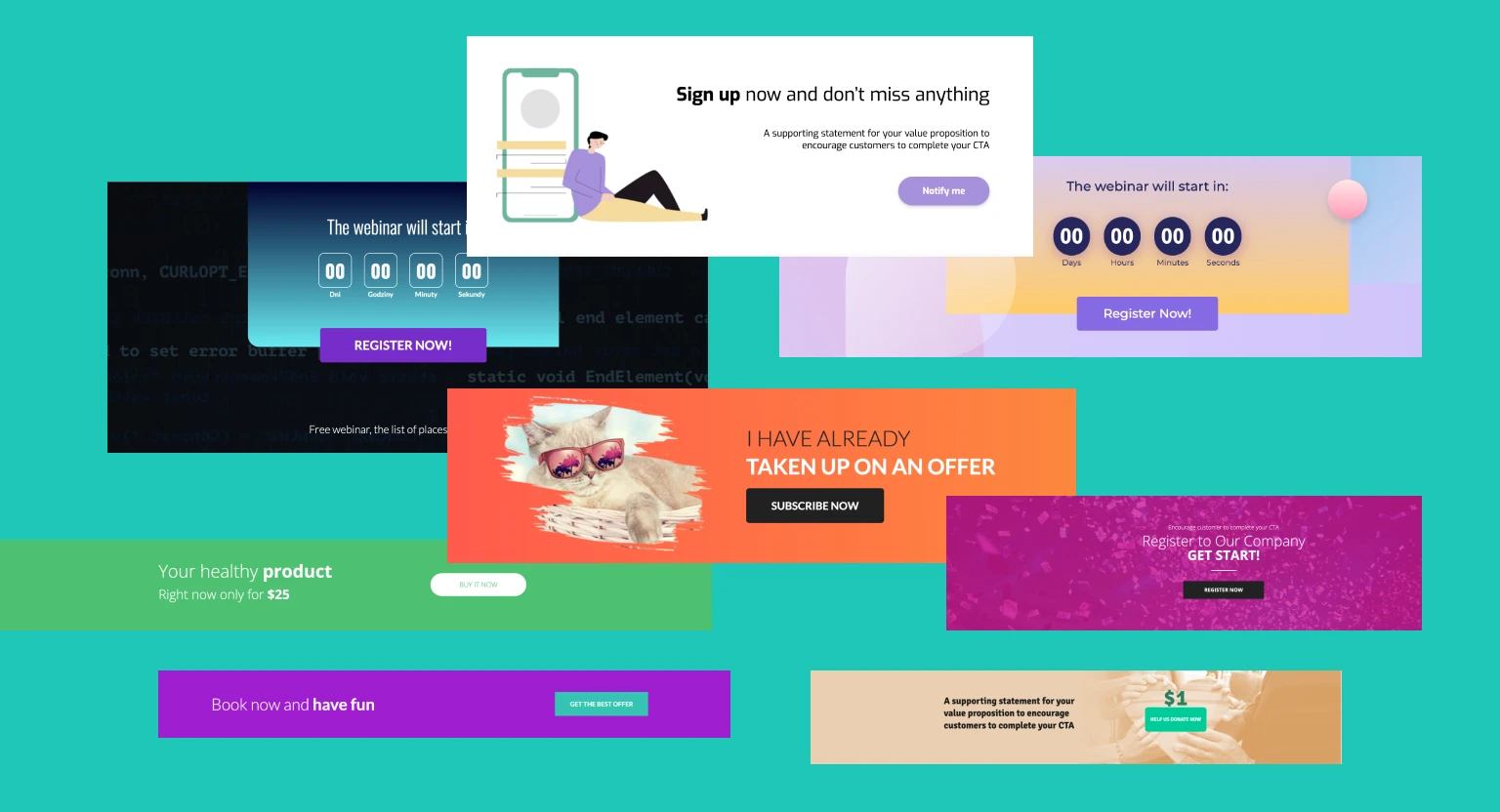
A well-designed CTA is clear, concise, persuasive and directly related to the action you want visitors to take. Use strong, action-oriented verbs that encourage an instant engagement. Words like “buy”, “subscribe”, “join” or “get” convey a sense of urgency and encourage action.
The CTA should be easily noticeable, but still harmonize with the overall design of the landing page. Use colors that stand out from the rest of the page to draw attention to the CTA.
You should never forget about mobile optimization. Ensure that the text is easy to read and large enough to be visible on various devices, including mobile screens. Design CTAs to be mobile-friendly and easily tappable on smaller screens. F
inally, place the CTA where it will be highly visible, preferably near the top of the page or following compelling content. Consider repeating it at the bottom for users scrolling through the page.
4. Trust Signals
Trust signals serve as a form of social proof, providing evidence of the positive experiences others have had with your business. They are commonly used on landing pages to build trust, credibility, and confidence in the minds of potential customers. They reassure visitors that they’re making the right choice.
Such trust signals may include testimonials, reviews, certifications and awards. If your company has won any awards, don’t hesitate to proudly show them off on your landing page! If your landing page is about signing up for a course, you might showcase testimonials from satisfied students and certifications from industry bodies.

5. Content
Generally speaking, content refers to meaningful, engaging, and solution-giving pieces of information.
Well-targeted and relevant content can be a powerful way to subtly communicate a value proposition, which can significantly increase a conversion rate. How to create compelling landing page content that engages visitors, communicates your message effectively, and drives desired actions? We’ve got some tips:
- Know your audience well. Understand their needs, preferences and concerns. Then tailor your content to their specific interests and goals.
- Start with a compelling headline that grabs attention and encourages visitors to explore further.
- Clearly communicate the value proposition of your product or service. Explain how it solves a problem or satisfies a need for the visitor. Make it evident why your offering is unique or exceptional.
- Highlight benefits, not just features. Rather than just listing features, focus on the benefits for visitors. Explain how your offering can positively impact their lives or address their specific needs.
- Be concise and to the point. Visitors often scan content, so present information in a scannable format with short paragraphs, bullet points and subheadings.
- Make sure your content is easy to read. Use legible fonts, appropriate font sizes and spacing. And, of course, ensure that your content is optimized for mobile users.
6. Design and Layout
An intuitive design ensures that visitors can navigate the landing page with ease. It has a direct impact on the user experience and the overall success of your marketing efforts.
A user-friendly design and layout create a positive first impression, increase user engagement, and contribute to higher conversion rates. When visitors can easily find and understand the information they need, they are more likely to take the desired actions. Such design is also particularly important for maintaining traffic and engagement, as it reduces the bounce rate.
Since mobile optimization is critical for reaching and retaining a broader audience, a user-friendly design is crucial to ensure that your landing page is responsive across various screen sizes.
A good landing page design will vary depending on your goal and the industry you operate in, but there are certain things you must consider if you want your conversion rate to be high. If you are interested in learning more, take a look at the best landing page examples we have prepared for the most popular use cases.
7. Contact Information
As already mentioned above, the goal of contact information on a landing page is to establish trust, offer support, encourage communication, and provide a means for visitors to take the next steps. Contact information makes your business more accessible to visitors. It offers transparency and shows that you are open to communication.
In some cases, visitors may prefer to contact you directly for more detailed information that may not be addressed on the landing page. Providing multiple contact methods, such as phone numbers and email addresses, ensures that visitors can reach out with queries.
Moreover, in certain regions or industries, providing contact information is a legal requirement. This information should be easily accessible, instilling confidence in the visitor.
Contact information also adds a human touch to your business. It shows that there are real people behind the products or services, making the interaction more personal.
8. Forms
Forms usually serve one primary purpose: their aim is to convert visitors into leads, which is also the ultimate goal of your landing pages. This is why forms are an integral component of effective landing pages, and why you should pay particular attention to creating lead capture forms.
Well-crafted forms optimize the user experience, making it easy, intuitive, and efficient for visitors to complete the form, increasing the likelihood of conversion. An effective form should be user-friendly, which means it should be clear and straightforward.
You should avoid unnecessary complexity and use simple language. Use clear and concise labels for form fields. Consider using placeholder text within fields to guide users on what information to enter. Clearly state what information is required and why.
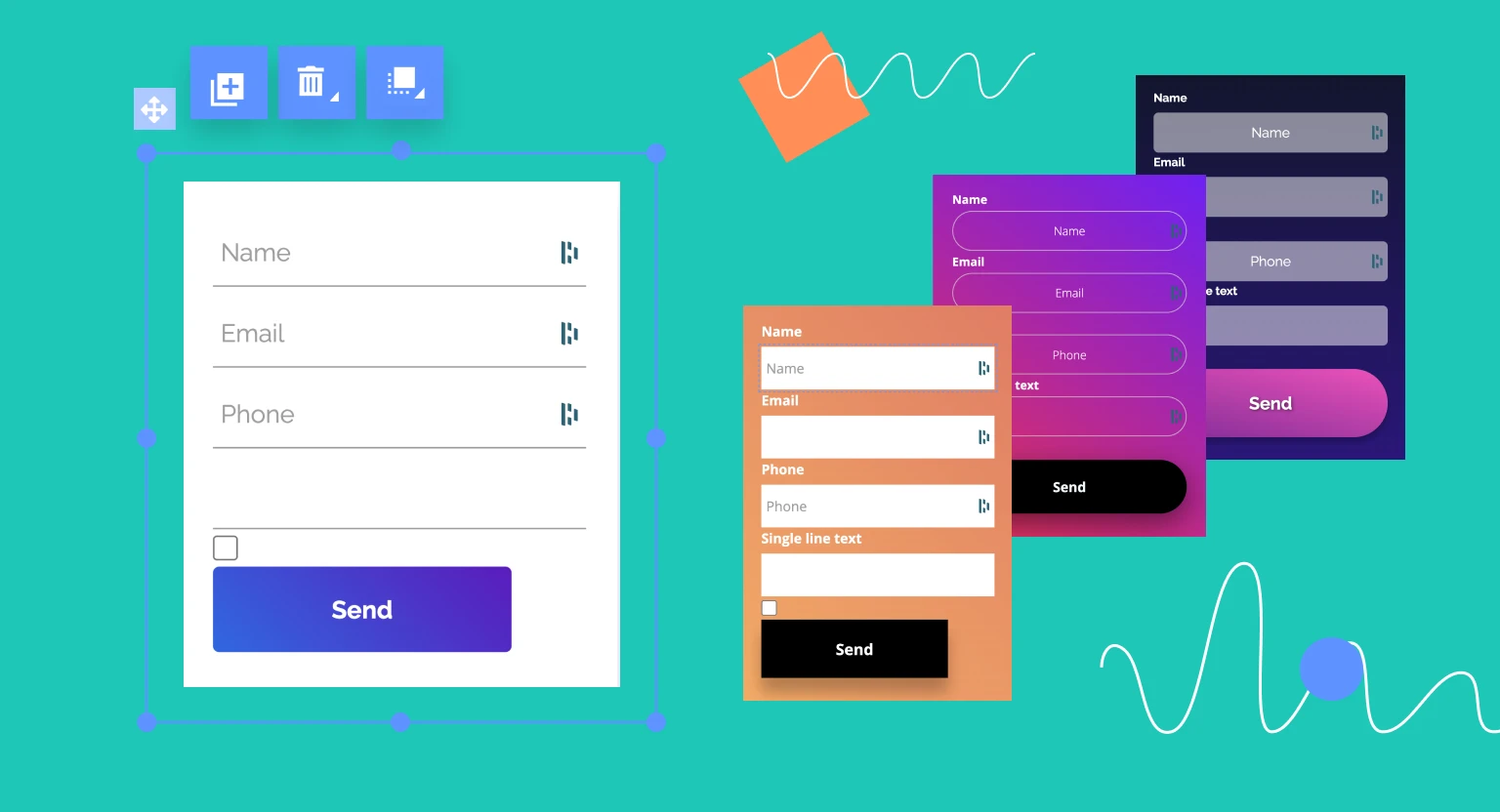
If possible, use form fields validation. This helps users correct errors instantly and ensures that they don’t have to submit the form multiple times.
Keep the number of form fields to a minimum. Only ask for essential information that is crucial to your conversion goal. Long forms can be intimidating and discourage users from completing them.
Explain clearly how user data will be used and protected. Include a link to your privacy policy for transparency. And finally, ensure a seamless experience for mobile users by making form fields easy to tap on smaller screens.
Pro-tip: Do you feel overwhelmed with all this responsibility? No worries, you can always reach out to Landingi’s resources on lead capture forms that will come in handy and some ready-made form designs to choose from. You may also benefit from finding out what makes a perfect form on a landing page.
9. Footer
The footer is a seemingly unimportant component that sits at the bottom of a landing page. However, its importance is frequently underestimated. In fact, it can improve the user experience, and it has a positive effect on SEO.
This landing page element can include additional information about your business, copyright information, links, privacy policy, terms of use and disclaimers. Including such information on the landing page can help ensure compliance.
To allow visitors to quickly navigate back to the top of the page, the footer may include a “back to top” button or link. The design of the footer should be consistent with the other elements of the landing page. It should be useful to visitors without distracting them from the main content.
Get 111 Landing Page Examples—The Ultimate Guide for FREE
Which is More Important for Landing Pages, Design or Content?
Both design and content are crucial elements for the success of a landing page.
While design ensures a smooth user experience, content is fundamental because it conveys the message and value proposition to visitors. This is why balancing design and content is so important. The design should complement the content and vice versa.
Design elements should enhance the presentation of content rather than distract from it. They work hand in hand to ensure the visitor is engaged and encouraged to take action.
Which is More Valuable: Testimonials or Certifications?
Both testimonials and certifications promote trust. While testimonials provide social proof from others, certifications demonstrate industry recognition. One can be more powerful than the other, depending on the industry and audience.
How do Landing Page Components Differ Between B2B and B2C Businesses?
Landing pages for B2B (business-to-business) and B2C (business-to-consumer) companies often have different objectives, target audiences and communication strategies. As a result, the components of landing pages can vary.
B2B landing pages often focus on building long-term relationships, demonstrating expertise and providing detailed information. On the other hand, B2C pages may be more transactional, focusing on immediate sales and emotional triggers.
In short, both B2B and B2C landing pages should be tailored to the unique needs and preferences of their respective audiences.
How do the Key Components Change Based on the Goal of the Landing page (e.g., Sales vs. Lead Generation)?
A sales-focused landing page might emphasize product or service benefits and features, pricing information, and testimonials. It should also streamline the checkout process to increase the likelihood of completed transactions.
In contrast, a lead generation page might focus on providing valuable content, offering lead magnets such as e-books, white papers or webinars to entice visitors to share their contact details.
What Role Does User Psychology Play in the Structuring of a Landing Page?
The role of user psychology is significant. Understanding how users think, behave and make decisions is critical to creating an effective and persuasive user experience.
Incorporating the principles of user psychology into the structure and design of a landing page can include highlighting benefits that resonate emotionally with the target audience, using interactive elements, providing a clear and focused decision-making path, building credibility with testimonials, and drawing attention to key elements.
A well-structured landing page that addresses user psychology can improve engagement, increase conversions and contribute to overall user satisfaction.
What Defines a Good Landing Page?
A good landing page resonates with its audience, provides clear value, and guides visitors to a desired action. It’s a combination of compelling content, intuitive design and strategic arrangement of elements. None of these aspects should be underestimated.
To adapt to changing user behavior and preferences, and to ensure your landing page remains effective in the ever-evolving digital landscape, consider regular testing and optimization so that it serves as a powerful marketing tool that drives your business growth.
Ready for Conversions? Build your Landing Page Right Now!
You’re now familiar with landing page anatomy and you know all the fundamentals to create it. From here on, it’s all about practicing. So: choose your editor and unleash your potential!
With Landingi drag-and-drop builder you will easily create landing pages, even if you have no coding skills. You can build pages from scratch or utilize one of 300+ fully customizable templates designed with an eye on conversion. With AI-powered copy generation assistant, loads of free images, and a bunch of optimization tools (like A/B tests or EventTracker) you’ll all you need to create stunning and high-converting pages.
Unsure? Check it out firsthand for free!

